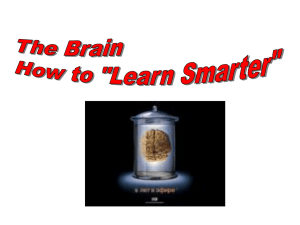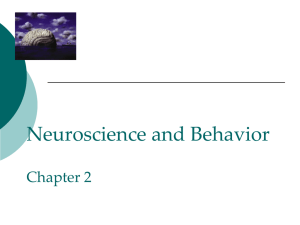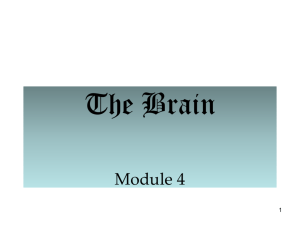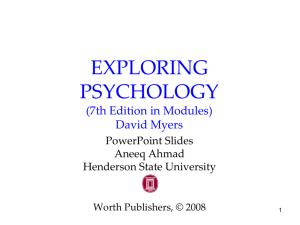2.4 Guided Reading Notes 1. Who was Edward Bradford Titchner
advertisement
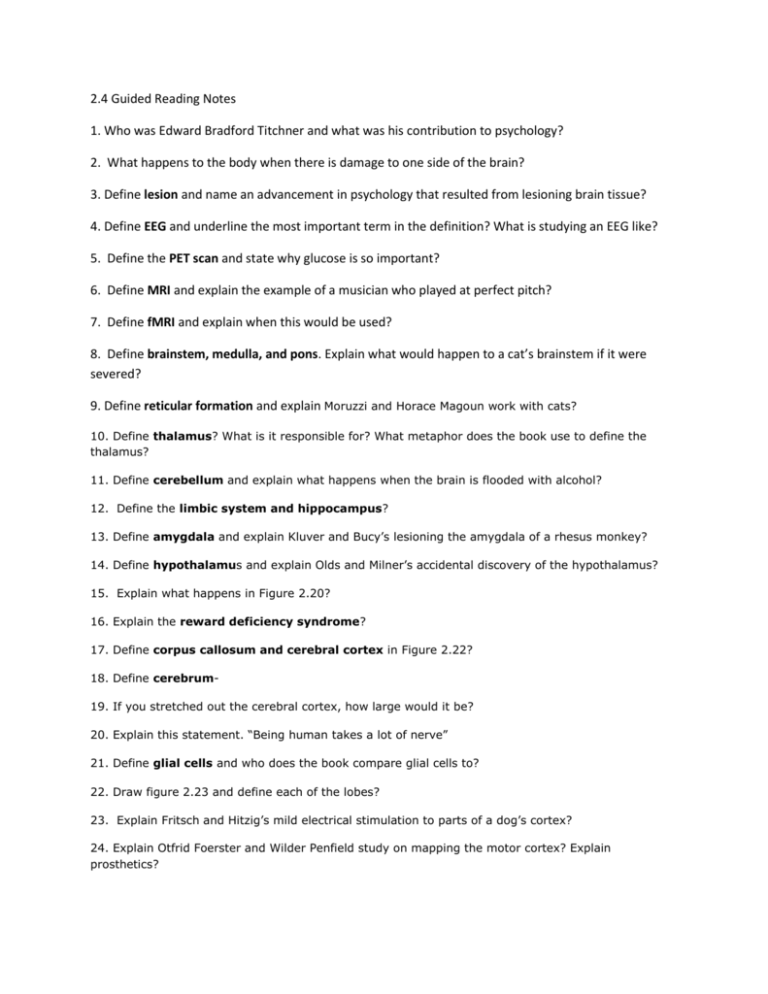
2.4 Guided Reading Notes 1. Who was Edward Bradford Titchner and what was his contribution to psychology? 2. What happens to the body when there is damage to one side of the brain? 3. Define lesion and name an advancement in psychology that resulted from lesioning brain tissue? 4. Define EEG and underline the most important term in the definition? What is studying an EEG like? 5. Define the PET scan and state why glucose is so important? 6. Define MRI and explain the example of a musician who played at perfect pitch? 7. Define fMRI and explain when this would be used? 8. Define brainstem, medulla, and pons. Explain what would happen to a cat’s brainstem if it were severed? 9. Define reticular formation and explain Moruzzi and Horace Magoun work with cats? 10. Define thalamus? What is it responsible for? What metaphor does the book use to define the thalamus? 11. Define cerebellum and explain what happens when the brain is flooded with alcohol? 12. Define the limbic system and hippocampus? 13. Define amygdala and explain Kluver and Bucy’s lesioning the amygdala of a rhesus monkey? 14. Define hypothalamus and explain Olds and Milner’s accidental discovery of the hypothalamus? 15. Explain what happens in Figure 2.20? 16. Explain the reward deficiency syndrome? 17. Define corpus callosum and cerebral cortex in Figure 2.22? 18. Define cerebrum19. If you stretched out the cerebral cortex, how large would it be? 20. Explain this statement. “Being human takes a lot of nerve” 21. Define glial cells and who does the book compare glial cells to? 22. Draw figure 2.23 and define each of the lobes? 23. Explain Fritsch and Hitzig’s mild electrical stimulation to parts of a dog’s cortex? 24. Explain Otfrid Foerster and Wilder Penfield study on mapping the motor cortex? Explain prosthetics? 25. What could the first 25 year old man do with neural prosthetics? 26. Define sensory cortex; Why do we our loved ones on the lips and not the toes? 27. Where is your occipital lobe located? 28. How do you know the idea that we only use 10% of our brain is a myth? 29. Define association areas- and explain what happen to Phineas Gage? 30. Define plasticity? 31. Explain 3 ways how plasticity benefits the deaf and the blind and explain Ramachandran’s study on amputees? 32. Explain Ramachandran & Blakeslee, 1998, p. 36 on intercourse and amputees? 33. Define neurogenesis and why would pharmaceutical corporations be excited about its future? 34. Do the brains two hemispheres serve different functions? Which side is dominant and which side is minor? 35. Define corpus callosum; Explain Philip Vogel and Joseph Bogen work on epileptic seizures? 36. Define split brain; Draw figure 2.31 and 2.32 into text with summation of captions? 37. Name 5 things the right hemisphere understands or perceives better than the left hemisphere? 38. Name and explain two studies each that support the power of the right and left hemisphere? 39. Explain in 1 paragraph the case of the disappearing southpaws? 40. Explain Figure 2.35 and the relationship between mind and brain?







